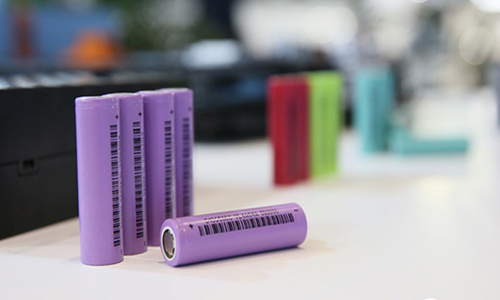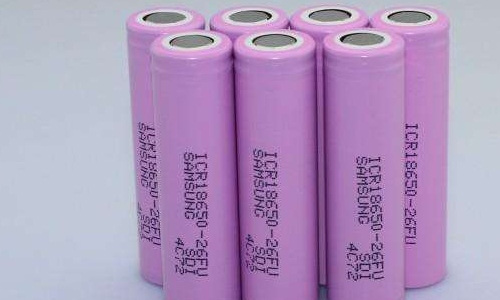High Amp Lithium Ion Battery Calculation
Dec 04, 2019 Pageview:1994
What is amp hour?
Ampere Hour (also referred to as Ah, or amp hour) is defined as the amount of energy charge inside a given battery that allows an amount of one ampere of current to flow for a period of one hour.
An ampere itself is a unit of measurement, which is used to measure the rate of electron flow "current" inside of an electrical conductor. One ampere is equivalent to one coulomb of an electrical charge that is moving past a specific point for one second.
Milliampere hour (also referred to as mAh) is an ampere hour divided by one thousand. In simple terms 1 Ah = 1000 mAh. The mAh is mostly used as a measurement of the charge inside electronic devices like in Laptops and Smart phones. It provides an estimation of how long the laptop or the smart phone will operate on battery before the need to recharge it once again.
What type of battery has the highest energy density?
Lithium ion batteries have the highest energy density on the market nowadays.
Lithium-ion batteries have built a reputation for itself that no product can overcome, at least for the time being. Lithium-ion batteries have proven to be the best solution for a rechargeable source of energy. Not only that, but nowadays energy can be stored from renewable resources (sun and wind) directly to lithium-ion batteries.
Scientists believe that there is no need to find a replacement for lithium-ion batteries. Instead, all of the current research work is to upgrade those batteries. Since the first lithium battery that was designed in 1970 until this moment, all that was done in the field was upgrading and enhancing the same battery "Lithium-ion battery"
It is also worth mentioning that the Lithium-ion batteries now are the most economical solution for portable energy sources. Their manufacturing prices have become very affordable, that they are the number one choice for every single mobile phone, laptop, and even electric cars manufacturers.
How much power does a lithium ion battery have?
Lithium-ion batteries are used for almost all electronic devices and electronic vehicles. Despite being more expensive than conventional alkaline batteries, Lithium-ion batteries have a much longer lifespan.
Lithium-ion batteries are made from what are called cells. Every cell of those is composed of three components; a positive electrode, a negative electrode, and a chemical component called an electrolyte between the positive and negative ones.
The positive electrode in the cell is designed from Lithium-Cobalt oxide. The negative electrode is designed from graphite. The electrolytes are such as oxides and sulfides. The electrolyte must have a long shelf life and offer high mobility for Lithium ions. The electrolyte can be liquid, polymer, and solid-state ones.
Lithium is an element that is highly reactive. A lot of energy can be stored inside its atomic bonds. This translates into high energy density for any lithium-ion battery. A typical Lithium-ion battery can store about 150 watt-hours of electrical charge in every 1 kilogram of battery.
Lithium-ion batteries can hold their charge for more time than any other type of batteries. Lithium-ion battery packs lose about 5% only of their charge per month, compared to the 20% loss per month for NiMH battery packs.
Lithium-ion batteries can handle many charge/discharge cycles before crashing. Moreover, Lithium-ion batteries do not have memory effect, which means that you do not have to completely discharge the battery before charging it again.
How do you check the data of a lithium ion battery?
Checking the data of your Lithium battery is quite easy. You either read the information provided by the manufacturer that is printed on the battery itself or in the documentation provided with the battery. Or you can drain the battery and then perform some simple calculations to know the information you want "mostly the capacity".
Before you read the information on any Lithium-based battery there are some symbols and definitions you should know:
Discharge Rating, which is represented by a number followed by the letter C.
The Capacity, which is represented by a number followed by the letters mAh.
The Cell count, which is represented by a number followed by the letter S.
Voltage, which is represented by a number followed by the letter V. (Sometimes called Nominal Voltage)
Discharge Rating
The discharge rating represents the rate at which the Lithium battery can be safely discharged without harming the battery. Discharge rating is dependent on the capacity of the battery, that is why it is represented by a number followed by the letter C, which stands for Capacity.
For example, let us say you have a Lithium battery that has a 5 Amps capacity. On the battery, it is written that the discharge rate is 50C. To calculate it you simply multiply 50 by the capacity which is 5, the result would be 250A. Therefore, 250A is the discharge rating for this battery.
The Capacity
In simple terms, the capacity of a given Lithium battery is the measurement of how much power this battery can hold. The unit of measurement is mAh "milliamp-hours".
The Voltage and Cell Count
Most single cell Lithium batteries have a nominal voltage of 3.7V. When there is more than one cell inside a given Lithium-based battery, which means the voltage gets added together. For example, if we have two cells inside a Lithium-based battery with the nominal voltage of 3.7, then that means the two cell pack is 7.4V, and if we have three cells inside, then the three cell pack is 11.1V and so on.
Knowing these terms will help you determine all the information about any given Lithium-based battery.
The other way is to test the battery yourself. Testing a Lithium ion battery is quite easy. However, extreme care must be exercised in order to safely handle the battery. To test the battery, simply follow the following steps:
Remove the Lithium battery from the device it powers.
Turn on your voltmeter (the device we will use to measure the battery)
Make sure that the voltmeter is set to measure in volts.
Locate the positive and negative terminals on the lithium battery you have.
Take care when locating the terminals, as they are very delicate.
Place the corresponding leads of the voltmeter on the battery.
The amount of charge inside the lithium battery will be displayed on the voltmeter's screen in volts.
Testing a Lithium battery can give you answers on the capacity, discharge rate, voltage, and weight of the battery. However, there are certain things like the type of inside materials, casing, electrodes, DOD, etc. that cannot be obtained from this test, and it is better to go back to the battery documentation to know them. If these documents are not available, the best course of action is to contact the manufacturer and ask for this information.
- Prev Article: Can you leave lithium batteries on charge?
- Next Article: Single High Amp 18650 Battery
Leave Message
Hottest Categories
-
Hottest Industry News
-
Latest Industry News











